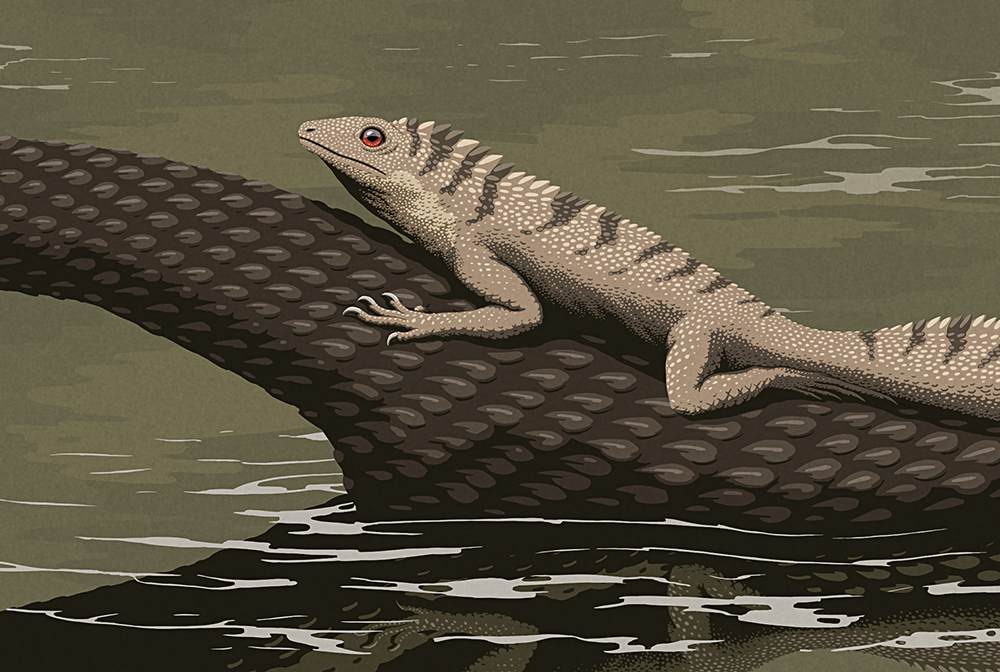Araeoscelis gracilis was a superficially lizard-like animal that lived during the mid-Permian, around 275 million years ago, in what is now Texas, USA. About 60cm long (~2′), it had a slender body, proportionally long legs, and a solidly-built skull with strong teeth, suggesting that it was a fast runner that specialized in cracking open the carapaces of thick-shelled prey.
It was one of the last known members of a lineage known as araeoscelidians, which are usually considered to be very early members of the diapsid reptiles – but a recent study has proposed they might have even more ancient roots than that, possibly being a branch of stem–amniotes instead.


